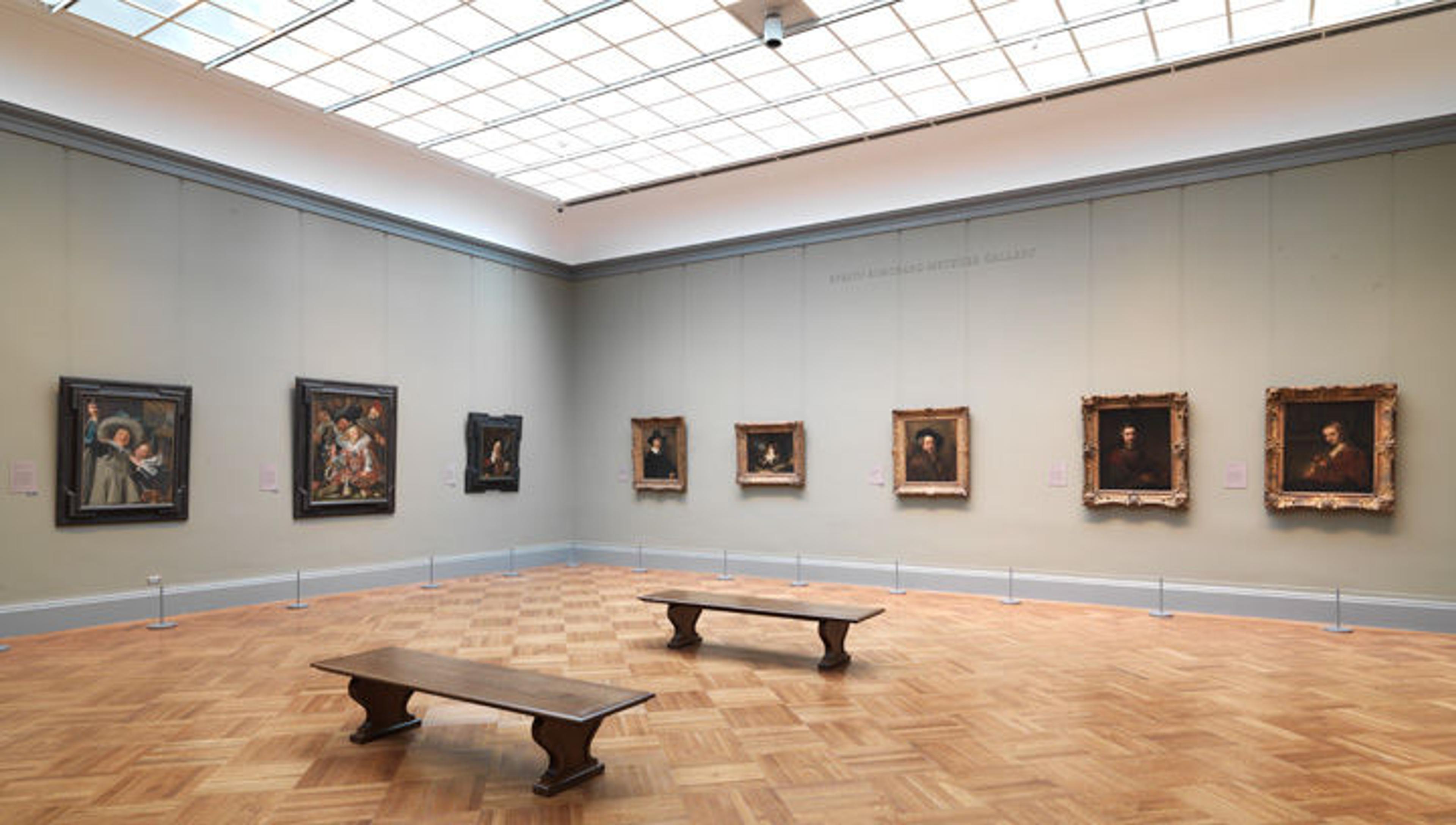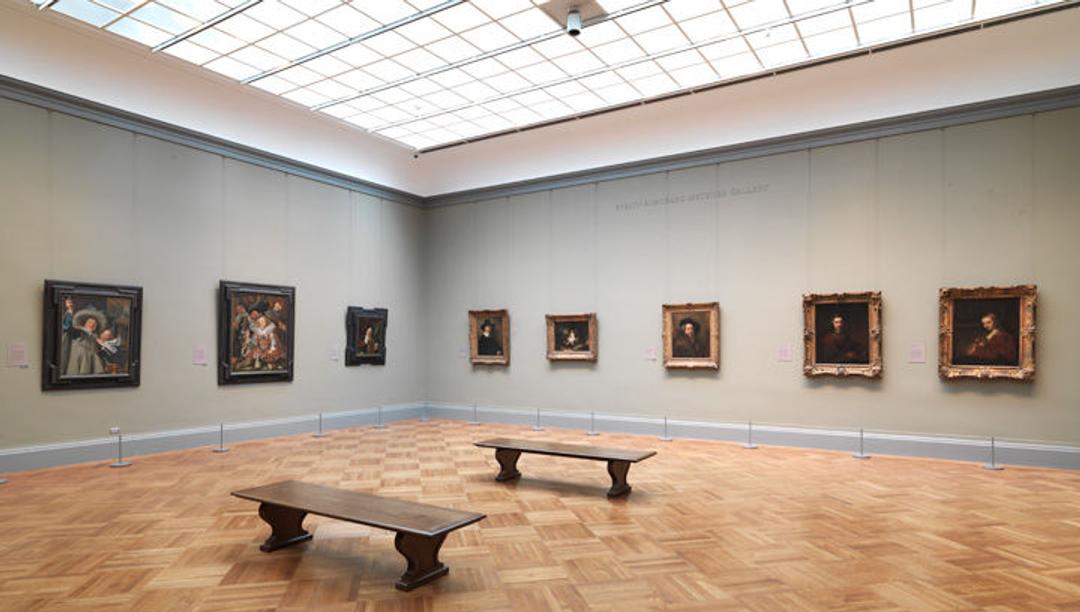
View of gallery 634 in the Department of European Paintings
«One of my favorite documents (yes, it is possible to have favorite historical documents!) was only discovered in Rome’s dusty state archives five years ago. It notes how the brilliant young Spanish painter Jusepe de Ribera, having found lodgings in which he could paint, received permission from his landlord to create a window in the ceiling of his apartment. The purpose was, he said, “to facilitate painting.” Caravaggio had done the same in his lodgings in 1605.»
You see, artists can’t paint without good light—and not just any light, but sunlight (ideally with a northern orientation). Just try to imagine Jan van Eyck trying to paint the minute details of the distant cityscape and mountains in his phenomenal Crucifixion without adequate lighting—which, believe me, could not be obtained with candles.
Left: Johannes Vermeer (Dutch, 1632–1675). The Allegory of Painting, 1666–68. Oil on canvas, 120 x 100 cm. Kunsthistorisches Museum, Vienna (GG_9128). Image via Wikimedia Commons
In an age dominated by the drama of artificial light, it’s all too easy to forget how important daylight has always been to artists: natural light possessing the full color spectrum; light that falls evenly across the surface of the panel or canvas. A beautiful illustration of this is Vermeer’s famous Allegory of Painting in the collection of the Kunsthistorisches Museum in Vienna, where we see the well-dressed artist sitting on his stool in front of his easel while a woman poses, dressed as Clio, the muse of history. The natural light from an unseen but clearly present window falls across her figure and gives an evenly balanced light to the artist’s canvas.
It follows that you cannot judge a painting without good light either. Not surprisingly, the optimal light in which to view a painting is dispersed and even daylight—which is why The Met is embarking on a four-year-long project to replace the skylights in the European Paintings galleries—originally constructed in 1939—and replace them with an up-to-date system; one that will significantly improve the way visitors experience the collection.
View of one of The Met’s European Paintings galleries in 1941, two years after the current skylights were installed
On our new web feature, Met Masterpieces in a New Light, you’ll be able to follow the project’s progress over the next four years and discover new ways to engage with our European paintings collection online while the galleries are closed. Be sure to bookmark the page and check in with us every month.

